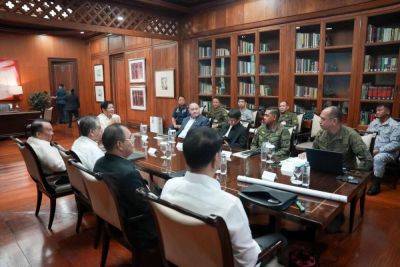Dancing With America Has Been a Curse for the Philippines
For Filipinos like me who grew up under the dictatorship of Ferdinand Marcos Sr., the news that the U.S. military would expand its presence in the Philippines has been dizzying and wounding.
The image of Secretary of Defense Lloyd Austin shaking hands in Manila last week with the country’s fatuously smiling president, Ferdinand Marcos Jr., the son of the former despot, was like some tragic “Groundhog Day.” Mr. Marcos was elected in May. So Filipinos find themselves not only with another President Marcos but also with another creeping occupation by the U.S. military under the guise of East Asian security.
The Philippine Senate put an end to the permanent basing of American forces three decades ago. But according to Mr. Austin, China’s growing shadow in the region makes a renewed American presence essential.
The Philippines’ proximity to China has long been seductive for the United States. For Filipinos, it’s a curse.
The 1898 U.S. annexation of the islands from the previous colonizer, Spain, after the Spanish-American War provided a foothold for American goods to get access to the real prize: China’s huge market. As Albert Beveridge, a senator from Indiana, put it in 1900, “The Pacific is our ocean …. Where shall we turn for consumers of our surplus? Geography answers the question. China is our natural customer.” The Philippines, he said, gave the United States a “base at the door of all the East.”
Filipinos fighting for the nation’s freedom from 1899 to 1902 had no chance against U.S. forces. During the Philippine-American war, more than 200,000 Filipinos were killed or died from famine or disease, and the conflict has been likened to genocide and the U.S. wars against Native Americans. What followed was the creation of a nation “in our image,” as the American historian Stanley Karnow described it.
American greed and geopolitics entrenched Philippine oligarchy as a matter of policy because it strengthened U.S. control. Taking on a feudal template laid down by the Spanish, a few powerful families prospered in the U.S. neocolonial orbit, consolidating land, resources and power through the Cold War and into the current era of China’s global ascendancy.
Scenes of abiding







